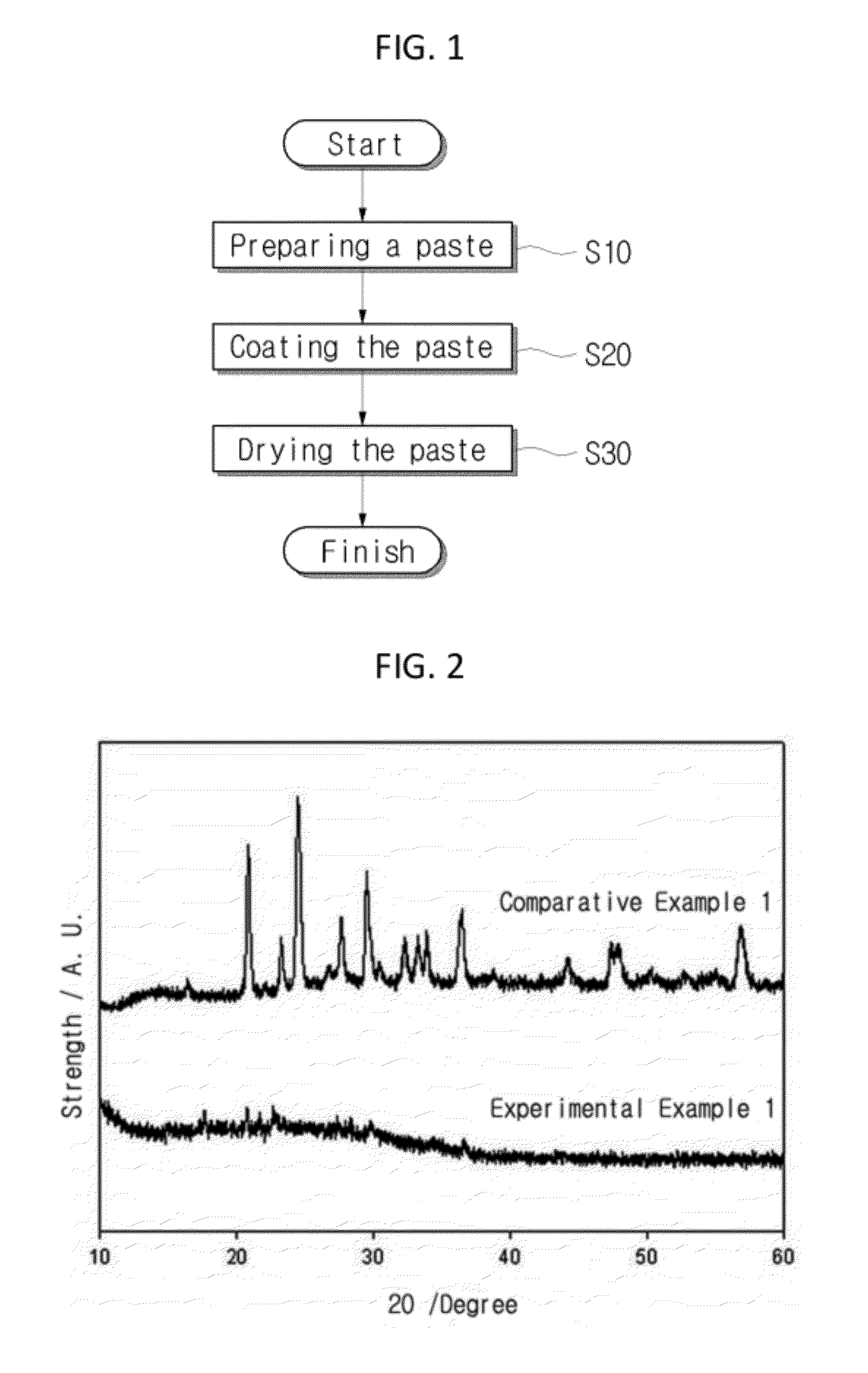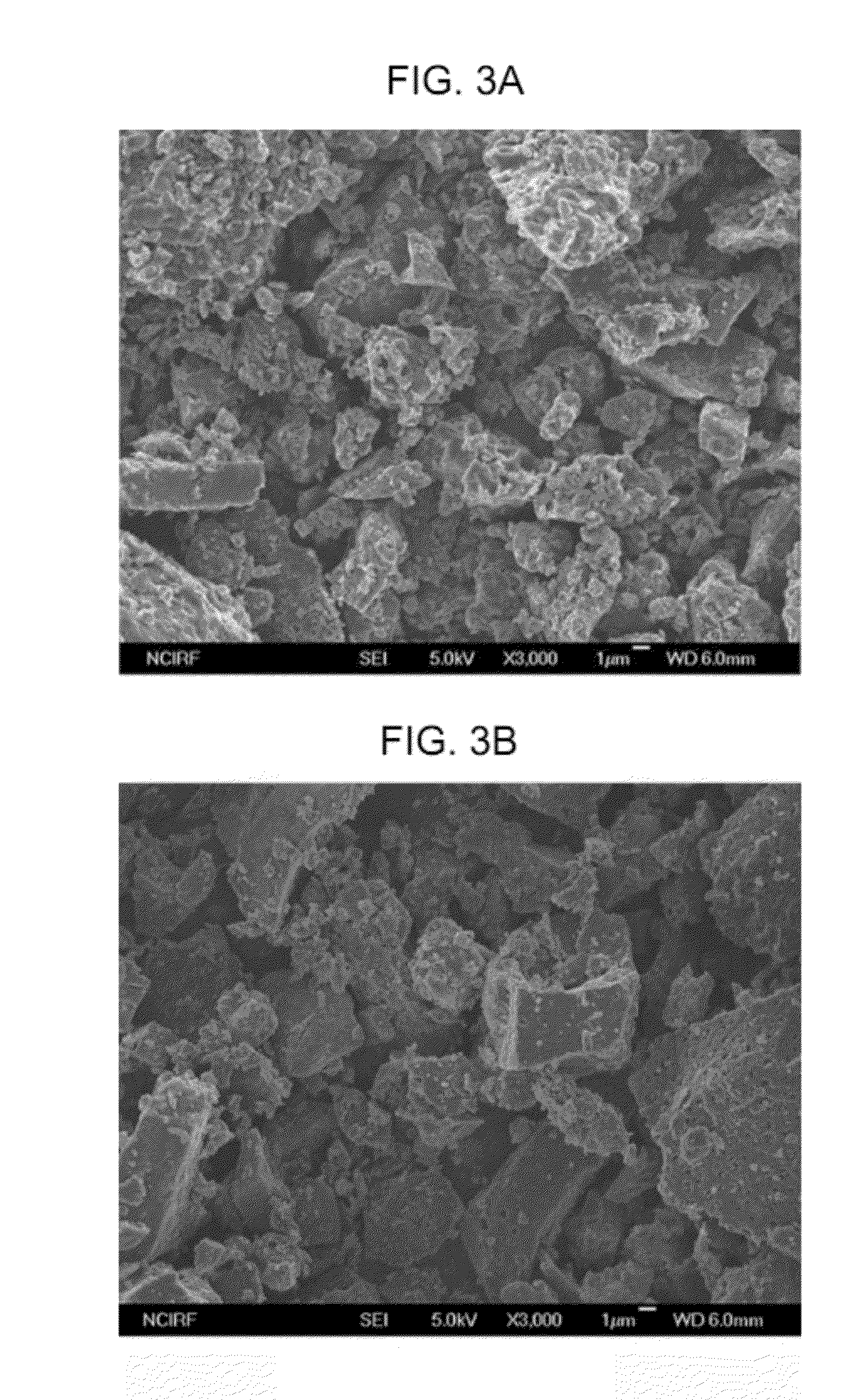Amorphous anode active material, preparation method of electrode using the same, secondary battery containing the same, and hybrid capacitor
a technology of anode active material and secondary battery, which is applied in the direction of electrode manufacturing process, natural mineral layered products, synthetic resin layered products, etc., can solve the problems of limited lithium storage site, limited expansion velocity, and graphite cannot meet all the demands in volume and output conditions, etc., to achieve significant charging and discharging velocity, improve lithium storage capacity, and improve the effect of lithium storage capacity
- Summary
- Abstract
- Description
- Claims
- Application Information
AI Technical Summary
Benefits of technology
Problems solved by technology
Method used
Image
Examples
experimental example 1 (
Amorphous Li3V2(PO4)3)
[0086]After LiOH.H2O and NH3VO3 is dissolved in distilled water and is mixed with stirring to be dissolved completely, maintaining the temperature of 70° C., the solution is put in NH4H2PO4 and sucrose-dissolved solution and it is stirred enough and it is dried at 80° C. Dried material is pressed and pallet is made. For 6 hours, pre-heating is treated under 300° C. argon atmosphere. Then, after grinding and mixing, the pallet is made again and heat treatment under 600° C. argon atmosphere is done again. At a temperature less than 600° C., vanadium is not reduced enough so that there can be impurity and as the temperature rises, the crystallizability increases. By element analysis, it is revealed that the parts by weight is Li:V:P:O=5.0:24.8:22.1:48.1.
experimental example 2 (
Amorphous MoO2)
[0087]At pH 11˜12, 50 ml KBH4 of 2.5 mole concentration is prepared. At dilute HCl aqueous solution, K2MoO4 solution of 0.25 mole concentration is prepared at pH=1. Stirring KBH4 solution prepared already, the K2MoO4 solution is put slowly through burette and a solid is formed by reduction. It is filtrated and the powder is collected. Obtained powder is treated thermally at 300° C. in vacuum to synthesize an amorphous MoO2. If the temperature of thermal treatment is over 500° C., the crystalline structure is made. Therefore, thermal treatment is done below 500° C. By element analysis, it is revealed that the parts by weight is Mo:O=74.4:25.6.
experimental example 3 (
Amorphous V2O5)
[0088]Crystalline V2O5 is dissolved in oxalic acid with distilled water and boiled by heating. HCl and distilled water is added, keeping heated for 20 minutes. The color of this solution is blue. The solution is put into ammonia solution and at a room temperature and it is stirred to obtain the deposition. After filtrating and cleaning with ethanol, the impurity is removed. With this powder obtained, the amorphous V2O5 is made by thermal treatment at 100° C. for 1 hour. By element analysis, it is revealed that the parts by weight is V:O=55.0:45.0.
PUM
| Property | Measurement | Unit |
|---|---|---|
| diameter | aaaaa | aaaaa |
| diameter | aaaaa | aaaaa |
| temperature | aaaaa | aaaaa |
Abstract
Description
Claims
Application Information
 Login to View More
Login to View More - R&D
- Intellectual Property
- Life Sciences
- Materials
- Tech Scout
- Unparalleled Data Quality
- Higher Quality Content
- 60% Fewer Hallucinations
Browse by: Latest US Patents, China's latest patents, Technical Efficacy Thesaurus, Application Domain, Technology Topic, Popular Technical Reports.
© 2025 PatSnap. All rights reserved.Legal|Privacy policy|Modern Slavery Act Transparency Statement|Sitemap|About US| Contact US: help@patsnap.com



